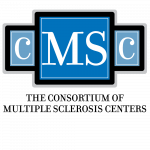Background: Healthcare claims data lack clinically relevant variables such as disease severity.
Objectives: Assess multiple sclerosis (MS)-related symptoms as a proxy for disease severity using administrative claims data and examine comorbidities and direct medical costs across severity categories.
Methods: Published literature informed a mapping exercise with a clinical expert to identify MS-related symptoms using diagnostic/medication/healthcare procedural codes. Patients were categorized as mild/moderate/severe based on a combination of post-index symptoms: bladder/bowel (urinary/stool incontinence, visit to urologist, etc), psychiatric (anxiety/depression), cognitive (dementia/cognitive impairment), and physical function (spasticity, wheelchair/cane/walker use, etc). The proxy measure was applied to US Workpartners claims data (1/1/201012/31/2019). Eligibility criteria were: ?3 MS-related (ICD-9-CM/ICD-10-CM: 340.xx/G35) inpatient, outpatient, or MS disease-modifying therapy (DMT) claims within a one-year period (latest claim=index date); continuous enrollment 6?months pre-/1-year post-index; and age 1864. Demographic and clinical characteristics (not included in the proxy assessment) and direct medical and pharmacy costs were compared across severity categories.
Results: The 1041 eligible patients were classified as mild (n=358 [34.4%]), moderate (n=491 [47.2%]), and severe (n=192 [18.4%]). Mean (standard error [SE]) age distribution was: mild 47.9(0.5); moderate 49.7(0.4); severe 50.7(0.7). Mean Charlson Comorbidity Index scores were: mild 0.40(0.05); moderate 0.68(0.06); severe 1.12(0.13; all p<0.001). The proportion (mild/moderate/severe) with gastrointestinal disease (14.2%/26.1%/43.2%), arthritis (5.9%/9.8%/15.1%), and hypertension/hyperlipidemia/diabetes (27.7%/38.5%/49.5%) increased with severity (all p<0.05). A greater proportion with moderate/severe vs mild disease had substance abuse disorder (4.3%/5.2% vs 1.7%; both p<0.05), chronic pain syndrome (4.5%/5.2% vs 1.7%; both p<0.05), and chronic lung disease (12.4%/13.5% vs 4.5%; both p=0.0001). Mean (SE) direct medical costs increased with severity (mild $9923[$1421], moderate $21,326[$2248], severe $36,876[$5058]; all p<0.005). Patients had higher non-DMT pharmacy costs with moderate ($34,912[$1779]; p<0.0001) and severe ($31,856[$2793]; p=0.0021) vs mild ($29,130[$2027]) disease.
Conclusions: Preliminary findings showed that comorbidities and direct medical/non-DMT costs increased with severity. Further validation of this proxy measure is needed.
[learn_press_profile]
